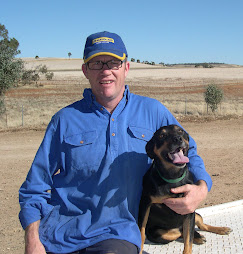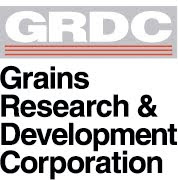The GFP A Team
We spent the afternoon looking at Wheat trials with the focus on breeding & physiology. The current traits for the breeding program are;
• Yield (#1)
• Water use efficiency
• Nutrient efficiency
• Disease resistance with a push for Ug99.
The breeding program is conducted under irrigation and with low rainfall the site ideally situated to test the varieties under perfect or drought conditions. Some of the lines that are in the later testing phase are looking very good in the low water years. The breeders are also conducting synthetic breeding where they are going back along the ancestral trails to the wild grasses that first gave us wheat to introduce new genetics and characteristics that have been lost. They are looking for traits such drought hardiness and pest resistance.
Roelfs Released in 2007 and Well Adapted Throughout the World
A real interesting section of the trials was the Physiology section where Hector & Marta were working. They are looking at which particular traits of the wheat plant contribute to yield. This information is gathered and given to the breeders to help about types and characteristics of lines of wheat to get the whole package right. They will be able to give models of idea plants for different environments. There were varieties with huge tillering %, ones with extremely large flag leaves. They were working with different varieties and looking at the temperature in the canopy. If the temperature was lower it showed an increase in yield. With these varieties they are looking at leaf architecture with stomata, shading by awns and colour of the leaf. This was a particularly good visit.
Alistair with a Double Dwarf Vaiety and Good Heads
Wheat with Inch Head
Our bags turned up, so that was a relief. All showered and shave with clean clothes down to the bar for a drink. We caught up with a number of Aussie’s who were visiting Obregon or worked at CIMMYT. Ky Matthews is the GRDC liaison between CIMMYT and breeders in Australia and coordinates the transfer of genetic (seed) material. Bert Collard was also there and he is a Durum Wheat breeder. We gave him a list of wishes: drought and crown rot resistance & frost resistance and of course high yielding. Off down the street and found a good steak house. Huge steak with only a little veg.
Yesterday was a focus on breeding and physiology. Today was going to about agronomy. We were lucky to catch Ken Sayre as he is retired but came back for the naming day of the CIMMYT at Obregon to the “Dr Norman Borlaug Centre”. Ken’s replacement was with us as well, Bram Govaerts. They both talked about the pillars of their research work;
• Pillar 1 – Zero till machinery and conservation methods.
• Pillar 2 – Strategic allocation of resources.
• Pillar 3 – Extension with hub trials and farmer days.
Bram with Trial Information
• Tillage reduction
• Rational residue management
• Viable rotation
• Economic benefit early on.
Trial Results Over 16 Years
The trial has shown that for the system to work, which it has over a number of years, you cannot use either zero till without stubble retention or stubble retention without zero till. When using tillage with no retention the yields have declined quite a lot over time.
Some interesting notes that came our way were;
• Only put a cover crop in “if” it is done for a major reason as the economics at this stage are not there.
• In Mexico at this site if everything is perfect, the best seeding rate has been 25 kg/ha.
• A good system to use under irrigation is to sow the next crop e.g. Sorghum in tandem with the last irrigation of the Wheat crop.
• They have been looking around for zero till seeders with a low cost and buy the machine for trial work. Then get a local manufacturer to make them. This is so the technology is available for the poorer farms to access.
Seeding Module made by Local Engineering Company
We spent the afternoon looking around the area and got a good feel for the state of agriculture in Sonora. We saw a range of crops of different crops being grown such as Chillies, Capsicum, Prickly pear. We saw some carrots being harvested and the saying “They are the best tasting, when come straight from the ground” and it was true. Sweet and crisp.
Ken took us to Los Chinos across the road to have some Carnitas. They are a Sonorian delicacy which is pig meat cooked in its own fat and comes out extremely tender. You have it in Wheat or Maize Burritos with the addition of Avocadoes, Red Onions, pickled veggies and Chilli paste. You eat with some good Mexican Beer.
Grame Eating a Carnita
After Eating We Went Out Back to See How it All Done.
Not a Good Idea!!













No comments:
Post a Comment